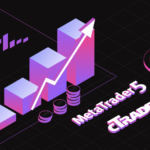In this post , I will elaborate on Understanding Crypto Derivatives, which is an insightful term within the context of modern finance.
As with other currencies, these instruments allow cryptocurrencies to be traded and provide functions for speculative trading and risk management.
This discussion will focus on the different types, uses, and risks associated with crypto derivatives to appreciate their significance in the crypto ecosystem.
Grasping the Basics of Crypto Derivatives
Derivatives are relatively new in the world of crypto, but they are powerful instruments nonetheless.
With the growth of crypto assets, the level of sophistication of these assets’ financial instruments also increases.

Derivatives, which were previously only available in traditional markets, are now crucial in crypto trading and risk management.
What are Crypto Derivatives?
Crypto derivatives are contracts that are tied to an asset that is a cryptocurrency, like Bitcoin. Instead of directly owning the asset like Bitcoin or Ethereum, traders can use derivatives to speculate on its price movements or certain risks associated with them.
A trader does not directly purchase a crypto, but derives a contract whose price is contingent to the existing market price of that crypto.
Different types of Crypto Derivatives
There are several types of crypto derivatives, including futures, options, and perpetual contracts. Futures contracts obligate the buyer to purchase and seller to sell the crypto at a specific price on a designated date.
Contrarily, options contracts permit the holder to buy or sell at a definite cost before a particular date, at his/her discretion. Perpetual contracts are the same as futures contracts in that they have no set expiry date.
How Do They Work?
In essence, trading a cryptocurrency products means ‘gambling’ on the future price of a specific cryptocurrency. You go long on a derivative contract if you think its price will increase.

If you expect it to decrease, then you go short. Your accuracy in predicting the market value of a cryptocurrency will determine whether you profit or incur a loss.
Why Use Crypto Derivatives?
There are plenty of reasons for using derivatives. For example, they can be used to hedge their positions and protect themselves from market volatility.
A good example is a holder of Bitcoin can short-sell BTC futures to protect himself from losses in the value of Bitcoin in the market during a bear market.
Some traders use the derivatives just for leverage which means additional borrowers are added in order to maximize the gains.
Leverage: Double-Edged Sword
With leverage, traders can manage large sums of capital with only a small amount. It is an advantage and disadvantage at the same time because these could result to greater profits, but at the same time, major losses.
Several exchanges provide up to 100X leverage, meaning that even a tiny shift in value in the unfavorable direction can wipe out your position.
Where Are They Available For Trading?

Centralized and Decentralized platforms both offer crypto derivatives. A host of derivative products are offered by centralized exchanges such as Binance, Bybit, and OKX. dYdX and GMX are decentralized protocols that allow users to trade derivatives without the aid of middlemen, which provides them with greater control over their money.
Regulatory Landscape
The regulatory framework of crypto derivatives differs from one country to another. For example, in the U.S., platforms dealing in derivatives are required to get registered with the Commodity Futures Trading Commission (CFTC). Some regions outlaw crypto derivatives for retail traders, other regions are still drafting suitable laws. This ambiguity can create problems for platforms as well as users.
Risks Involved
Derivatives can be very profitable, but come with significant risk. In addition to high market volatility and losses due to leverage, there is also the risk of counterparty (most prevalent in unregulated platforms), liquidity, and technical risks. Knowing these risks is crucial step prior engaging in derivative trading.
Institutional Interest
A number of institutional investors are interested in the crypto derivatives market. The capacity to hedge exposure, manage risk, and partake in price speculation has lured hedge funds, family offices, and asset managers. This surge of institutional money has enhanced the depth and maturity offered in the crypto derivatives market.
Impact on the Market
Derivatives in cryptocurrencies serve an important function in both the definition of the asset’s value and trading volume in the market. Often high trading volumes in the futures market signal increased investor interest which may affect the spot price of cryptocurrencies. On the other hand, this can create artificial volatility in the market, particularly when positions that are heavily leveraged are forcibly closed.
Most Traded Crypto Derivatives Instruments
Bitcoin futures are available through CME Group, alongside Ethereum options and perpetual swaps available on Binance and BitMEX. These instruments allow for varying levels of risk, including straddles, spreads, and calendar trades.
Parting Advice
Crypto derivatives fall in the intersection of innovation and complexity in the digital asset world. They are powerful for hedging and speculation, but they do come at a risk. New traders must educate themselves on the risk profiles inherent to these instruments and be mindful about using too much leverage.
Conclusion
In conclusion, Crypto derivatives are a very interesting but intricate part of the digital asset ecosystem. Although they provide immense opportunity for speculation and hedging, they also carry great risk.
With how sophisticated these instruments can get, a new trader needs to learn how they operate, the risks, and the consequences of overleveraging.









